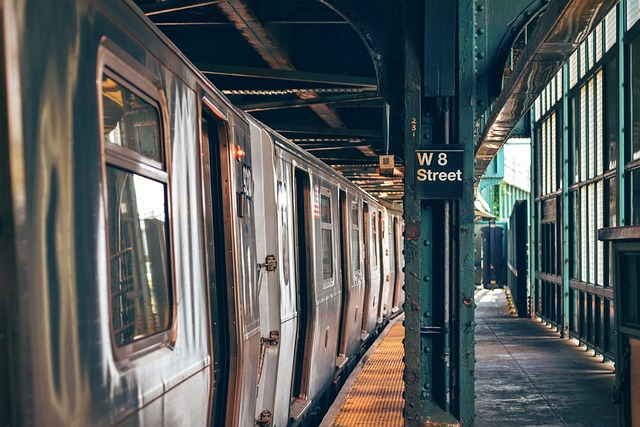Share This Article:

Washington, DC (WorkersCompensation.com) - A new rule issued by the U.S. Department of Transportation’s Federal Transit Administration (FTA) will make transit workers safer, officials said.
The first-of-its-kind rule establishes minimum standards for rail transit agencies that officials said will improve safety conditions and protect rail transit workers.
"Transit workers deserve to know their safety is the highest priority when they're performing track work," U.S. Transportation Secretary Pete Buttigieg said. "We now have the first-ever rule requiring worker protection standards for rail transit agencies that will keep American transit track workers safe as they do their important work to keep our transit systems operating."
Under the rule published to the Federal Register on Oct. 31, rail transit agencies across the country will have one year to create a worker protection program and receive approval from the State Safety Oversite Agency (SSOA). The transit agencies are also required to implement comprehensive safety training so they can ensure workers are reporting unsafe acts and conditions.
"I am proud that the Biden-Harris Administration is directing rail transit agencies across the nation to put workers' safety first," Deputy Transportation Secretary Polly Trottenberg said. "For the first time, FTA is issuing a national standard to make work safer for the men and women who maintain our country's transit systems. We owe them a safe workplace as they provide an essential service to the traveling public."
The rule comes after transit agencies have come under fire to make workplaces safer.
In August, the FTA directed the Metropolitan Transportation Authority (MTA) New York City Transit (NYCT) to come up with a safety plan for their workers. The FTA conducted an audit and found that the transit agency needed to “take action to address an escalating pattern of safety incidents and concerns affecting NYCT transit workers.” FTA determined that a combination of unsafe conditions and practices created “a substantial risk of death or personal injury.”
FTA found 38 near miss incidents and two fatal accidents, including the November 2023 death of Hiliarian Joseph, 57, an MTA flagger who was killed when he was struck by a subway train. In June of this year, another flagger was seriously injured when they were struck by an out-of-service train in Brooklyn. Half of the 38 near misses, the FTA said, were due to failure to follow established flagging rules. The FTA also blamed the close calls on a faulure to use radios correctly, a lack of supervision and inattention on the part of train operators.
The FTA directed a review of the agency’s safety and training programs, and is requiring the New York Public Transportation Safety Board to submit monthly reports showing the progress the transit agency is making in lowering risks.
But the MTA pushed back on the findings, saying it plans to appeal. In a letter to the FTA, interim New York City Transit President Demetrius Crichlow wrote, “we strongly dispute FTA’s view that NYCT has somehow been negligent when it comes to addressing the safety of track workers, one of our most essential priorities. The agency has extensive safety protocols covering the more than 1.5 million work tours that take place along the right-of-way during active service in our 24/7 subway system.”
Union officials said their members had been saying the safety concerns had been on the minds of their members.
“There’s a constant tension between on-time train performance and worker safety and that pressure has increased dramatically,” John Samuelsen, president of the Transport Workers Union, told The City newspaper in August.
Statistics show that between Jan. 1, 2008, and June 30, 2024, 29 transit workers across the country were killed and 144 were seriously injured on the job. The FTA’s final rule was recommended by both the National Transportation Safety Board and the FTA’s Transit Advisory Committee for Safety.
As part of the final rule, rail transit agencies must adopt and implement Roadway Worker Protection Programs to improve worker safety; establish minimum RWP program elements, including job safety briefings and lone worker protections; create or update safety manuals; and establish a training program that addresses all transit workers responsible for on-track safety by position.
AI california case management case management focus claims compensability compliance courts covid do you know the rule emotions exclusive remedy florida FMLA glossary check Healthcare health care hr homeroom insurance insurers iowa leadership medical NCCI new jersey new york ohio osha pennsylvania roadmap Safety state info technology texas violence WDYT west virginia what do you think women's history women's history month workcompcollege workers' comp 101 workers' recovery Workplace Safety Workplace Violence
Read Also
About The Author
About The Author
-
Liz Carey
Liz Carey has worked as a writer, reporter and editor for nearly 25 years. First, as an investigative reporter for Gannett and later as the Vice President of a local Chamber of Commerce, Carey has covered everything from local government to the statehouse to the aerospace industry. Her work as a reporter, as well as her work in the community, have led her to become an advocate for the working poor, as well as the small business owner.
Read More
- Apr 02, 2025
- Liz Carey
- Apr 02, 2025
- Claire Muselman
- Apr 02, 2025
- Claire Muselman
- Apr 01, 2025
- Frank Ferreri
- Apr 01, 2025
- Chriss Swaney
- Apr 01, 2025
- Liz Carey




